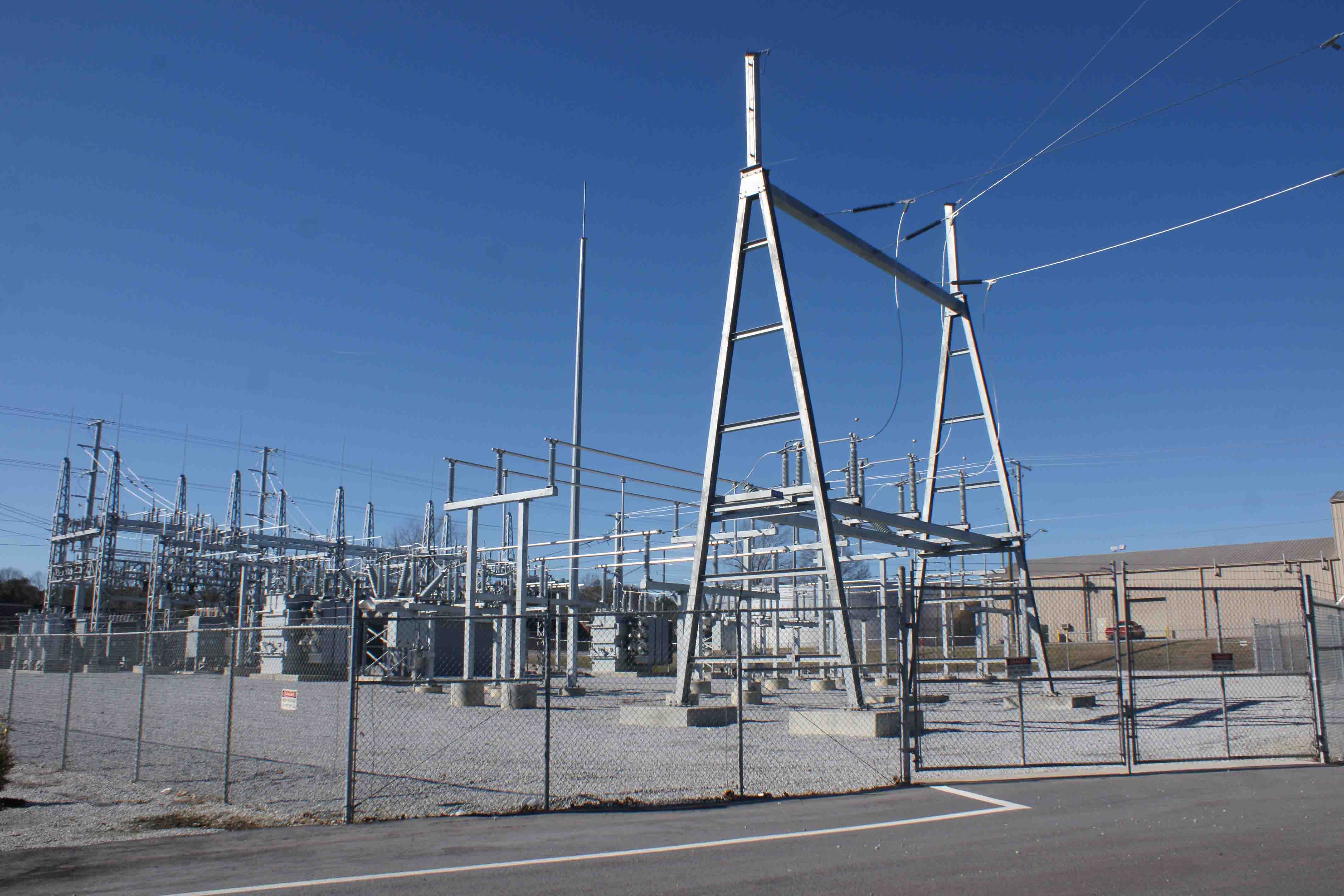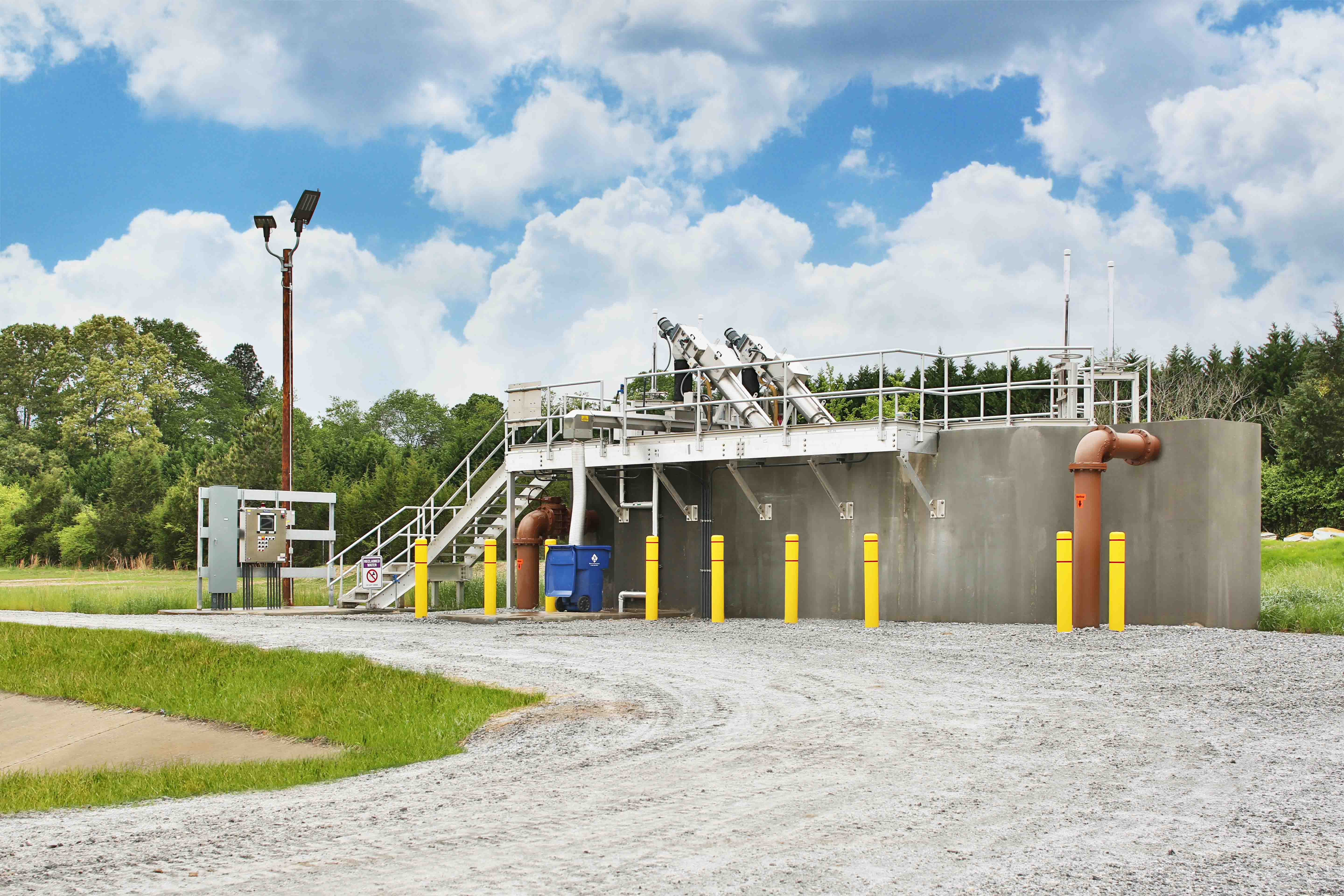Whether it's extending sewer lines, expanding the capacity of a wastewater treatment plant or upgrading an electrical substation, infrastructure plays a big role in cities and towns working to attract economic development prospects.

The City of Newberry's new electrical substation was built next to one of the city's
largest customers and was selected to minimize distribution lines to this customer
in order to provide greater reliability. Photo: City of Newberry.
In other words, if you build it, they will come — Or at least they're more likely to stay and consider expanding.
Take the City of Newberry, which built a new electrical substation adjacent to its largest customer, a major food processing company. The city chose the location to minimize the distance that electricity must travel along distribution lines from the substation serving the company to the company's processing facility.
The proximity of the substation to the company's processing plant greatly reduces the chance of a power outage. Reliable electricity is particularly important to a food processing company, where power outages halt production. This can result in a loss of refrigeration, meaning food products must be discarded which can be costly.
"This company has U.S. Department of Agriculture inspectors on site, and if they cannot prove that food is held at certain temperatures, it can force them to lose the product and would be considered a financial loss for them," said Tim Baker, utility director for the city, which is a member of the SC Association of Municipal Power Systems. "Loss of electricity also forces them to have to reprogram much of their machinery, which impacts their production time."
Baker said making the upgrade to serve one of the area's largest employers may have helped retain jobs in the area. And the city has also seen more power usage at the site as the company adds more refrigeration units and automation processes. Newberry is building another electrical substation on the other side of the city to be served by a different transmission line. The city's plan is to eventually tie the two stations together to provide back-ups for each other.
"Having the right infrastructure in place is vitally important to helping economic development in our community," Baker said. "The advantage we have as a small city is that we are accessible to business leaders and are willing to sit down with them and see what they truly need and then help them every step of the way in meeting those needs."
City at a crossroads
In the City of Woodruff, the wastewater treatment plant was nearing the end of its life expectancy when the city decided to expand the existing plant and take advantage of new technology with upgrades.

The City of Woodruff made a host of equipment and technology upgrades to its
wastewater treatment plant in order to increase plant capacity, reliability,
efficiency and worker safety. Photo: City of Woodruff.
"Our system was at a point we had to make a decision — go to a regional facility or invest and do it in-house. Council saw the vision of what we could be," City Manager Lee Bailey said.
Now the city can use the recent upgrade of the plant as a valuable tool in helping the area recruit new businesses.
"It boils down to having available capacity to offer to new businesses or development.
In the sewer world, capacity of the plant is key. We're speaking about how much available wastewater you can treat," Bailey said.
The new plant, which went online in September 2017, has increased capacity by 40 percent, he said. Part of the project includes renegotiating the town's service area, with Woodruff now able to extend its lines to an area with available commercial land abutting the city limits.
"What that does is help keep our debt capacity lower. That turns into lower user rates, and that helps attract new businesses," Bailey said. "Businesses will ask, 'Can you treat our flow? Do you have capacity for our business?' Now we can tell them, 'Yes, we do.' Our sewer has become a tool for expansion."
Greater capacity and cleaner water
The Town of Lexington increased its service area in February by taking over the troubled I-20 Wastewater Treatment Facility that had been owned and operated by a private for-profit utility company.
"This is a long-awaited realization of many years of effort by the town, Central Midlands Council of Governments, other regional municipal and county governments, state and federal environmental regulators and concerned residents to fully implement a regional sewer system to improve water quality and safeguard our natural waterways in accordance with the Clean Water Act of 1972," said Lexington Mayor Steve MacDougall.
Four weeks after taking over the Carolina Water Service facility, the town diverted all flow to the Joint Wastewater Treatment Facility in the City of Cayce. That move eliminated discharge from the facility into the Lower Saluda River, a long-standing problem with Carolina Water Service. Lexington's advanced treatment at the joint facility processes wastewater to a level where it can pass drinking water standards, MacDougall said.
Over the next five years, the town plans substantial investments for sewer infrastructure rehabilitation and improvements to meet environmental, safety and service standards, he said.
"The Town of Lexington now has ability for future expansion of utility services. This is due to the fact we now have capacity where previously it was not available," he said. "Finally, there can be an uptick in recreational river activity, since the Lower Saluda will become more desirable due to cleaner water."
Green infrastructure
The City of Columbia's new LEED Gold Water and Wastewater Administration building — once a brownfield site and auto dealership — shows how putting green infrastructure in place of a once-blighted expanse of concrete can serve as a catalyst for surrounding economic development. LEED, an internationally known green building rating, stands for Leadership in Energy and Environmental Design.
"It may not have been the easiest location. It may not have been the cheapest location to do it, but it was the right location," Assistant City Manager of Columbia Water Clint Shealy said of the new 15,300-square-foot administrative building, complete with a green roof, and low-impact landscaping and at the 10-acre site.
"There was a lot of vagrancy there, a lot of loitering and crime. But what residents were telling us, immediately after we started constructing this facility, is that just the activity that was happening there reduced that crime, reduced the loitering, and provided energy in the community that they so richly needed."
He said the city is already seeing potential investment in the area surrounding the new facility, including some interest in a local food co-op on the adjacent property.
"And there's talk of facade renovations and public and private investment," Shealy said. "These communities need a catalyst. And we believe this has been a jumpstart to that."
